
Episode 188 | September 15, 2025
Why brand matters and why CMOs must focus beyond pipeline
3X CMO Joe Chernov shares why brand matters, how AI sharpens personas, and why marketers must stop chasing pipeline at the cost of long-term impact.
Why brand matters and how CMOs are playing out of position
Attention CMOs! You're not a CRO, so why are you acting like one?
That’s the provocative question Joe Chernov, B2B marketing leader and Operating Partner at Battery Ventures, raised in this Insights Unlocked episode. In a candid conversation with UserTesting CMO Johann Wrede, Joe pulled back the curtain on what’s broken in modern CMO roles, and how marketing leaders can fix it.
“I did my best work when I wasn’t afraid of getting fired,” Joe said. “I think the reason why we put ourselves in this pipeline loop to begin with is because we think it is a better way to keep our job. … You’re never going to win the market by being a more efficient spender in demand gen.”
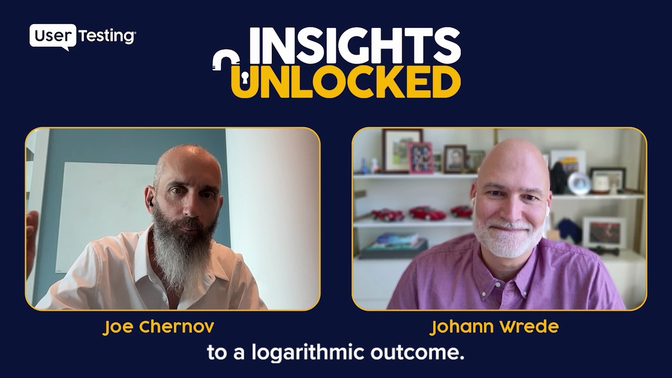
From confusing KPIs with job purpose to the slow erosion of brand storytelling in favor of short-term pipeline wins, Joe’s insights are a wake-up call for any marketing executive trying to navigate today’s fast-changing landscape.
Let’s break down what he shared, and what it means for you as a marketing leader.
How CMOs became underpaid CROs
Joe didn’t mince words when describing what he sees in today’s B2B marketing leadership: a tendency for CMOs to behave like “underpaid CROs.” It’s a subtle but damaging trap: one where marketers, eager to prove their value, tie themselves too closely to short-term revenue metrics like pipeline and MQLs.
“Right now, most CMOs in B2B tech act like underpaid CROs,” Joe said. “They show up to board meetings trying to sound like revenue generators. And in doing so, they lose sight of the long-term role they were hired to play.”
The problem, he explained, isn’t that pipeline isn’t important. It’s that only focusing on pipeline robs the CMO of their broader, more strategic role: shaping the brand, the story, and the long-term customer experience.
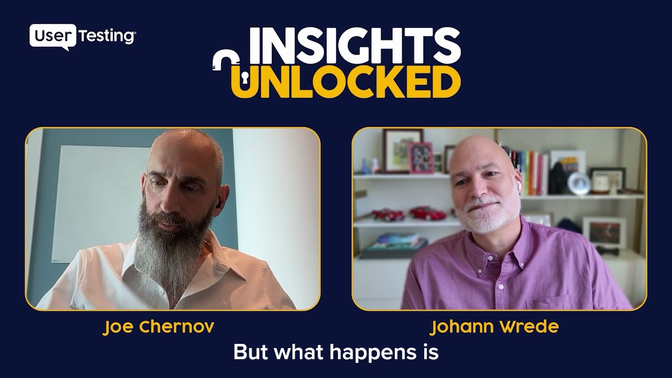
The Maslow’s hierarchy of marketing leadership
Joe introduced a brilliant metaphor to help us think about marketing priorities: Maslow’s hierarchy of needs. At the bottom of the pyramid is pipeline. It’s essential for survival. If your team isn’t consistently generating leads and opportunities, nothing else really matters. But once that need is met and repeatable systems are in place, the job of the CMO shifts.
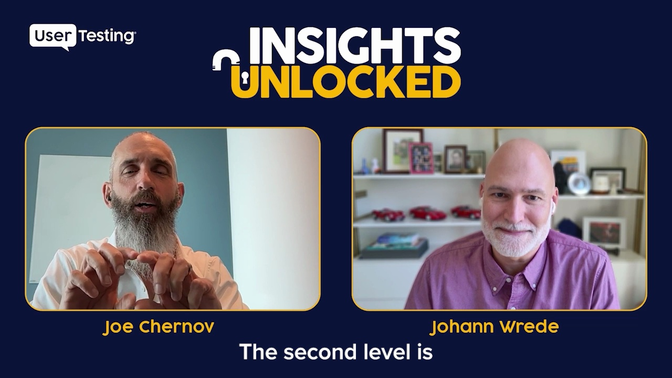
“The first level is ‘do we have pipeline?’ The second is, ‘do we have a system in place that will continue to generate pipeline?’ Only then can we move on to the self-actualization stuff,” he explained.
And that “self-actualization” isn’t fluff. It’s where long-term brand investments live. It’s where human insight, product positioning, and creative storytelling shape the company’s future, not just its next quarter.
Brand vs. demand: Why it’s not a binary choice
One of the episode’s strongest themes was the false dichotomy between brand and demand. CMOs often feel forced to choose: Should I focus on building a lasting brand or on driving this quarter’s numbers?
Joe’s response? You need both, but brand is your long game. And crucially, you need to know why you were hired.
“You’re adhering to the letter of your job, but not the spirit of your job,” Joe said, recounting a pivotal moment when a CEO challenged him to stop playing out of position. “You were hired to be creative.”
When you reduce your impact to pipeline alone, you erase the deeper strategic reasons why CMOs exist: to shape perception, build trust, and position the business for scalable growth.
ON-DEMAND WEBINAR
Tactical (and practical) tips to get fast feedback for better marketing
The power of strategic brand moments
To drive this point home, Joe shared a compelling story. At Pendo, he designed custom-branded sneakers as a no-strings-attached gift for influencers. One of those recipients, initially skeptical, received the sneakers and later happened to mention Pendo during a workshop. That moment led directly to a major deal landing in the company’s lap.
Joe never would have known the story if the CRO hadn’t casually mentioned it in a board meeting prep session.
“That too is correlation, not causal,” Joe admitted. “But brand is about building the relationship between two things and trusting that rational people will draw that connection.”
You can’t A/B test your way to moments like that. But those brand-driven “surprise and delight” interactions often deliver far more impact than a perfectly optimized LinkedIn ad.
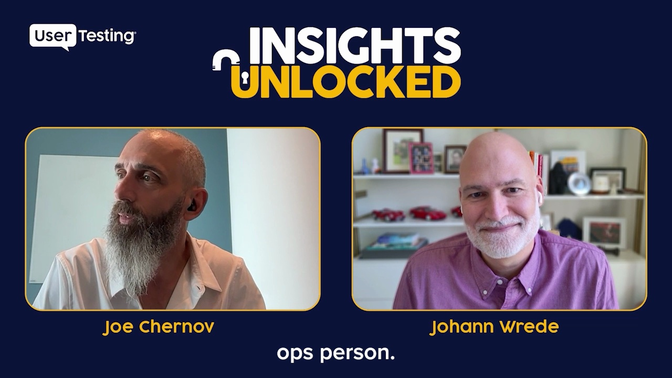
How AI is reshaping the modern CMO’s toolkit
No conversation about marketing leadership is complete these days without touching on artificial intelligence. Rather than framing AI as a replacement for marketers, Joe focused on how it can expand the modern CMO’s toolkit, particularly in areas like persona development and human insight.
Traditionally, building personas has been more art than science. Marketers rely on limited customer interviews, surveys, and gut instinct. AI, however, opens the door to a more data-rich, dynamic approach.
By training your AI on actual customer interviews, surveys and other rich data sets, it can help quickly identify nuances and specifics, at scale, about your personas that are way more actionable and focused than a generalized Ideal Customer Profile (ICP).
“You can have a much richer, more evolving ICP through AI,” Joe said. “It helps challenge assumptions and removes some of the bias we don’t even realize we’re operating with.”
Whether it’s identifying patterns in content consumption or simulating conversations with buyer personas, Joe said, AI can empower marketers to make smarter, faster decisions rooted in human behavior.
Brand storytelling starts with understanding your audience
For B2B marketers especially, Joe believes there’s a massive gap between what companies think they know about their customers and what they actually understand. Most companies fall back on basic firmographics and vague pain points like “wants a promotion” or “doesn’t have budget.”
To illustrate what real understanding looks like, he shared an anecdote about the nuanced persona of the household cleaner Mr. Clean, “Your house is clean but for other people’s dirt.”
That level of emotional, human-centered thinking is almost nonexistent in B2B.
“That’s a level of persona that B2B seldom, if ever, gets to,” Joe said. “We should be aiming for that Mr. Clean level of insight.”
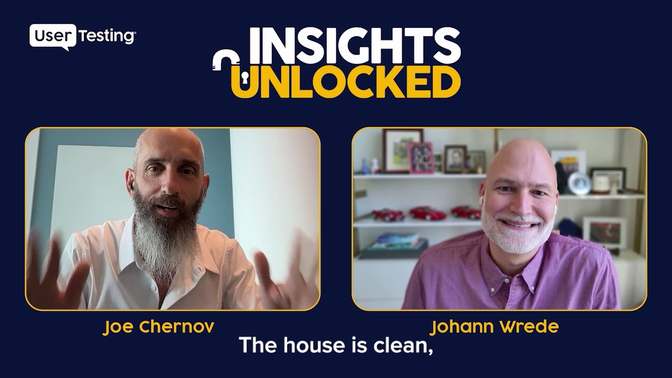
AI may help us get there, he said, not by replacing human intuition but by amplifying it through real user feedback, behavioral data, and continuous learning.
ON-DEMAND WEBINAR
Fix the gaps: how to optimize the customer journey for better ROAS and higher ROI
Don’t measure brand the same way you measure pipeline
As tempting as it is to chase KPIs for everything, Joe warns against trying to force brand metrics into a demand-gen mold.
Yes, it’s possible to correlate brand efforts with things like reduced CPC or improved ad performance, but the real impact of a brand is felt over time, and often anecdotally. CMOs need to be comfortable with that ambiguity.
“You won’t get to the other stuff, like shaping the narrative, unless pipeline is in place,” he said. “The best way to get people to believe in your long-term impact is by delivering on short-term needs first.”
In other words, pipeline buys you permission. Once your revenue-adjacent metrics are healthy, you earn the space to make bold, creative moves that shape your company’s future.
Rethink your role and act with long-term intent
The most powerful insight Joe shared was this: If you want to last in your CMO role longer than 18–24 months, you have to stop optimizing for short-term wins.
“If you’re at a venture-backed company, the growth expectations aren’t linear. They become logarithmic because it’s a winner-take-all world we live in,” he said. “And you can’t demand gen your way to a logarithmic outcome. Demand-gen is high floor, which is valuable right? There’s always some food on the table for sales. But you’re never going to win the market by being a more efficient spender in demand gen.
“When I say you have to be thinking long term and be the caretaker of a long-term vision of the company, it’s not because I like the art of doing that or it sounds romantic. It’s because if you want the job for five years, ten years, you have to do that because that future is coming and you have to be ready for it. And you’re not going to get ready for it by being a little bit more efficient at your demand gen spend. You have to find points of leverage. You have to find step functions. And those step functions come from outside of the demand gen program.”
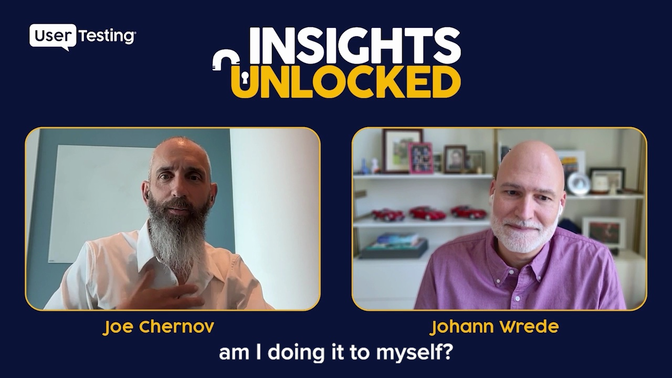
Those step functions come from brand, strategy, customer insight, and creative risk-taking. They don’t always come with perfect attribution models; but they do drive exponential growth when executed with intention.
And that’s the difference between surviving and thriving as a modern CMO.
Episode links:
- Joe Chernov on LinkedIn
- Johann Wrede on LinkedIn
- Battery Ventures
- Nathan Isaacs on LinkedIn
- WEBINAR: Seeing is understanding: how early adopters are using ai to buy — explores how AI influences user behavior and buying decisions, aligning with the episode’s discussion of AI's impact in marketing strategy
- GUIDE: Unlocking audience insights: driving smarter decisions across product, marketing, and ux — offers actionable steps for gathering and leveraging customer feedback to inform strategy, echoing the episode’s emphasis on better understanding personas and deeper customer insight
- GUIDE: Unlocking campaign effectiveness for demand generation — focuses on refining marketing messaging and campaigns based on validated feedback, relevant to balancing pipeline focus with brand and insights-driven strategy
- PODCAST: How ux and marketing drive better customer experiences (episode 162) — examines the collaboration between marketing and UX to optimize customer experience using real insight, very much aligned with the episode’s emphasis on blending brand strategy with human-centered insight
- PODCAST: How empathy in marketing can unlock your brand’s higher purpose (episode 178) — delves into empathy-driven marketing as a form of brand leadership, resonating with the themes of persona development, storytelling, and long-term brand strategy discussed in the interview
- BLOG: How to create customer personas & buyers personas — provides guidance on building actionable personas using qualitative and quantitative methods, directly mirroring the episode’s conversation about persona development and reducing bias
- BLOG: Know your audience for a better ROI — emphasizes the importance of developing empathy through personas and ongoing validation, echoing the episode’s message that true customer insight fuels better marketing and strategy
GUIDE









